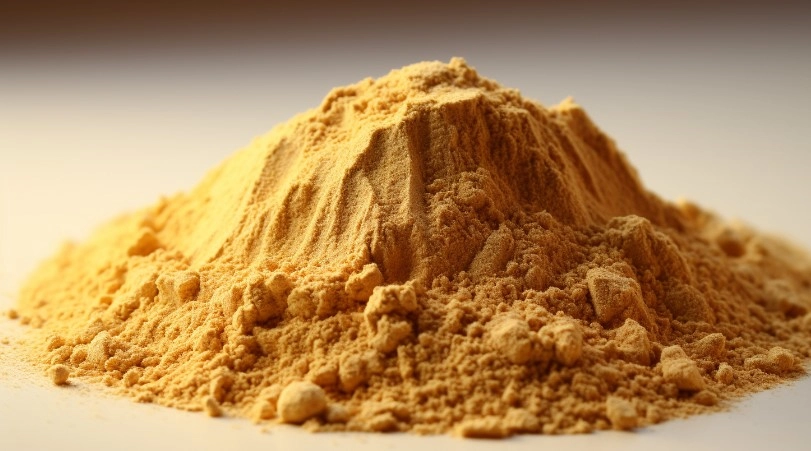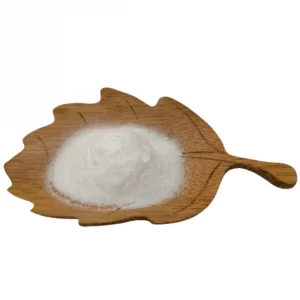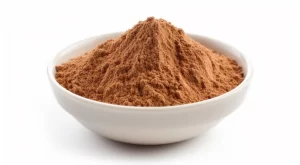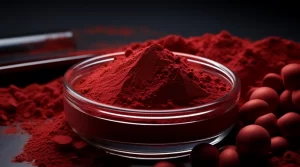Puerarin 30%, 98% del uso

Puerarin, también conocido como puerarin flavona, es un glucósido de carbono isoflavona natural, que es el componente clave de puerarin para desempeñar un papel medicinal. Puerarin tiene las funciones de reducir el azúcar en la sangre, regular los lípidos en la sangre, proteger los vasos sanguíneos, el estrés antioxidante, anti-infección, mejorar el índice de sensibilidad a la insulina, y menos reacciones adversas, conocido como "fitoestrógeno", que se utiliza clínicamente en el tratamiento de enfermedades cardiovasculares y cerebrovasculares, cáncer, enfermedad de Parkinson, enfermedad de Alzheimer, la diabetes y las complicaciones diabéticas.
Fuente: Pueraria lobata (Willd.) Ohwi se extrajo de raíces secas
Propiedades: Polvo marrón
Número CAS: 3681-99-0
Fórmula molecular: C21H20O9
Peso molecular: 416.378
Uso clínico de la puerarina
Puerarin Tratar la diabetes
La puerarina puede tratar la diabetes reduciendo la concentración de azúcar en sangre. La puerarina puede regular al alza el sustrato del receptor de insulina IRS-1 y la proteína del factor de crecimiento similar a la insulina IGF-1, y promover la expresión del receptor de insulina InsR y del receptor activado por el proliferador de peroxisomas PPARα, a fin de reducir el azúcar en sangre y tratar la diabetes. Además, la puerarina también puede inhibir la actividad de la α-glucosidasa, reduciendo así la concentración de azúcar en sangre y logrando el propósito de tratar la diabetes.
Puerarin Efecto antitumoral
La puerarina tiene un efecto inhibidor evidente sobre la proliferación de células tumorales, y puede promover la apoptosis de células tumorales y tener efecto terapéutico sobre las células tumorales.
Puerarin Efecto protector sobre el hígado
La puerarina contiene saponinas, que pueden proteger el tejido hepático del daño inmunológico. La puerarina puede proteger las lesiones hepáticas por absorción gástrica, inducir la apoptosis de las células estrelladas hepáticas activadas, invertir la fibrosis hepática inducida químicamente y proteger las lesiones hepáticas agudas inducidas por el tetracloruro de carbono. Al mismo tiempo, la puerarina tiene diversas actividades fisiológicas.
Puerarin Antiarrítmico, antianginoso
Los estudios han demostrado que la puerarina puede reducir la incidencia de fibrilación cardiaca en ratones Kunming inducida por cloroformo, y aumentar significativamente la dosis umbral de paro cardiaco, presístole ventricular, fibrilación ventricular y taquicardia ventricular en ratas SD inducida por aconitina, lo que indica que la puerarina es adecuada para el tratamiento de la arritmia. La puerarina inyectable es eficaz en el tratamiento de la angina de pecho coronaria. Su mecanismo incluye: en primer lugar, puede reducir la frecuencia cardíaca y la presión arterial, mejorar los signos vitales, reducir el consumo de oxígeno del miocardio, expandir la arteria coronaria, mejorar la hipoxia miocárdica, la isquemia y los índices hemorreológicos; en segundo lugar, la reducción de la viscosidad de la sangre tiene el efecto de ablandar los vasos sanguíneos, mejorar la aterosclerosis, reparar las células endoteliales vasculares y prevenir el deterioro de la enfermedad. Los estudios han confirmado que la aplicación de la inyección de puerarin en el tratamiento de pacientes ancianos con enfermedad coronaria y angina de pecho no sólo puede mejorar la incidencia, sino también hacer que los vasos sanguíneos se dilaten, aliviar la hipoxia y la isquemia, mejorar aún más la reología sanguínea, el índice de consumo de oxígeno muscular y otros indicadores, y el efecto es ideal.
Puerarin Impacto en el sistema cardiovascular
Los flavonoides totales de la Pueraria pueden aumentar el flujo sanguíneo en el cerebro y las arterias coronarias. La puerarina puede promover de forma evidente la circulación cerebral y periférica en animales y humanos.
Proveedor de puerarina: www.backvita.com
Correo electrónico: [email protected]
Teléfono: +86 (029) 8187 2325



